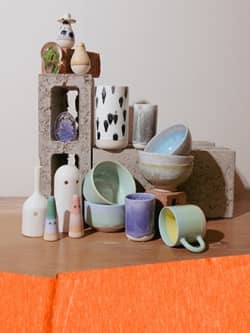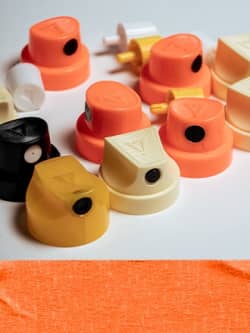Air Jordan History - Jordan 15 - 26 (Part 2)
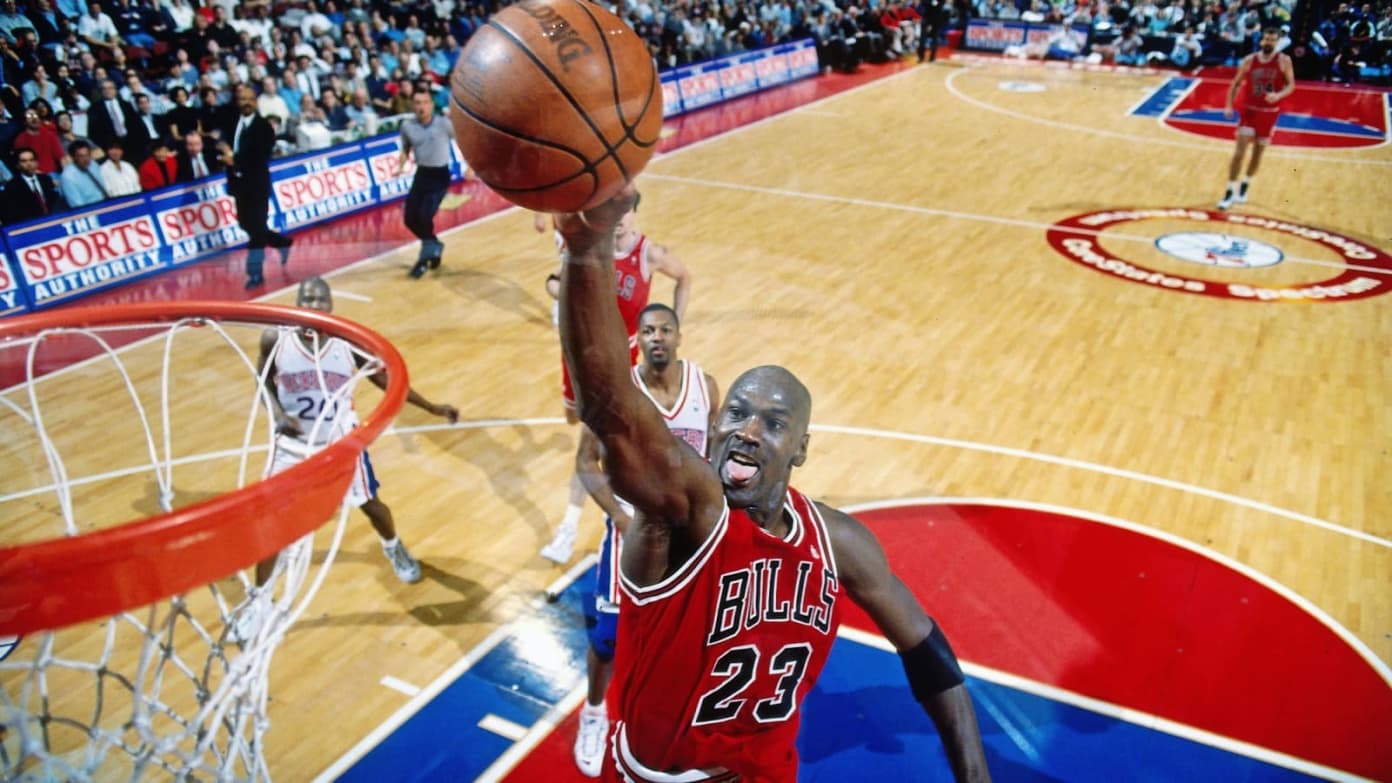
It's Friday so that means we are back with the facts! The series covers a brief insight into each of Michael Jordan's signature shoes. Last week we covered the most recognizable Jordans, namely the 1 to 14 models - so check that out if you haven't yet. This week we look at some more obscure Jordans you may have never seen, as we venture up into the high teens and beyond for Jordan Brand.
Air Jordan 15
Since Michael Jordan retired once again, people started saying that the Air Jordan line should be discontinued. But of course, Tinker Hatfield, Micahel and the other designers thought otherwise. It was time to look for inspirations, something different, something not previously used on another shoe.

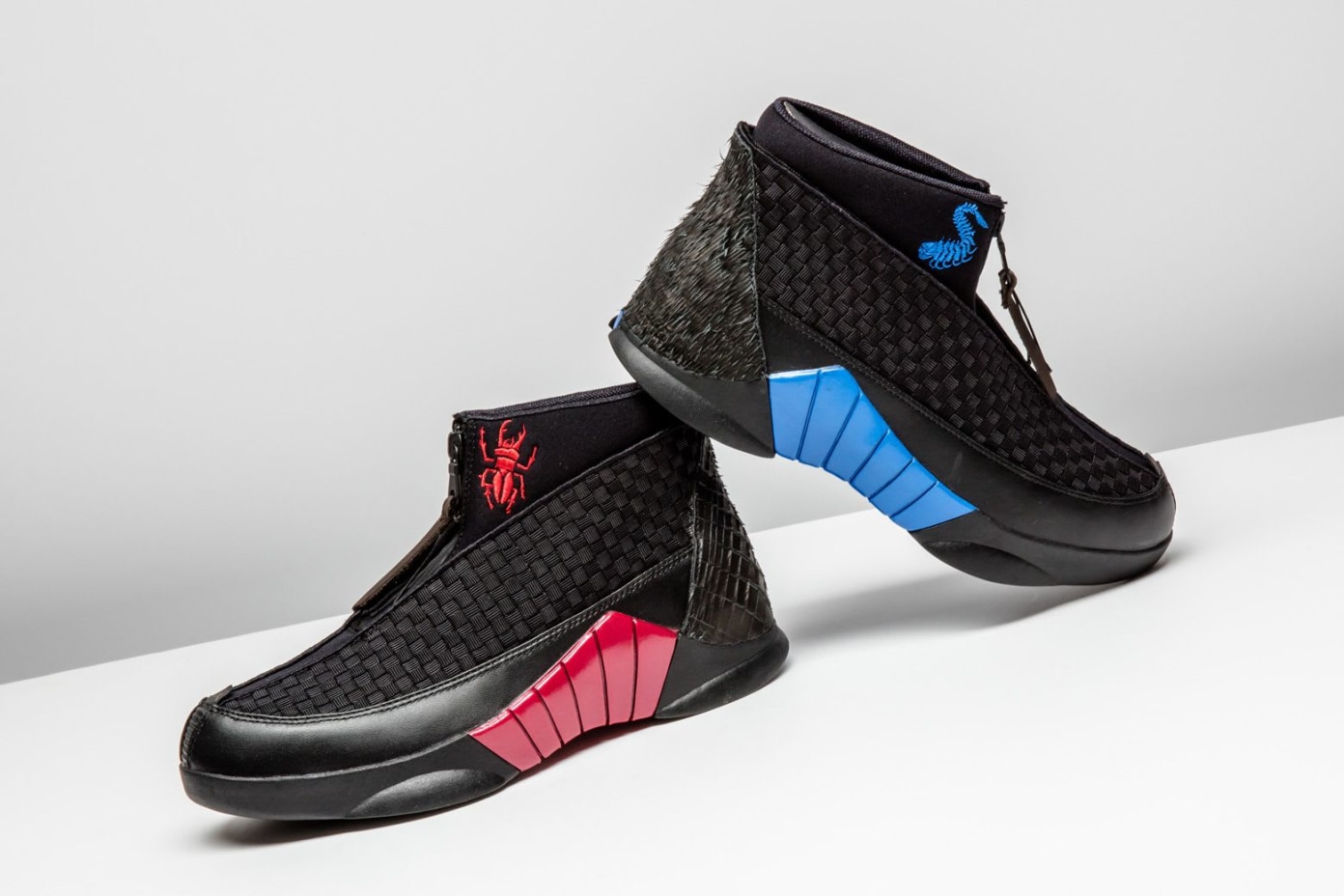


So the idea of the Air Jordan 15 would be to pay respect to Michael and his years in the NBA. The X-15 fighter plane came into mind at the moment. This plane broke the speed records, and set its own at 4,502 miles per hour. The X-15 is the best there ever was, just like Michael.
Rumor also has it that the tongue on the Air Jordan XV is inspired by Michael Jordan, since he always sticks his tongue out when he goes for a dunk, shot, or layup
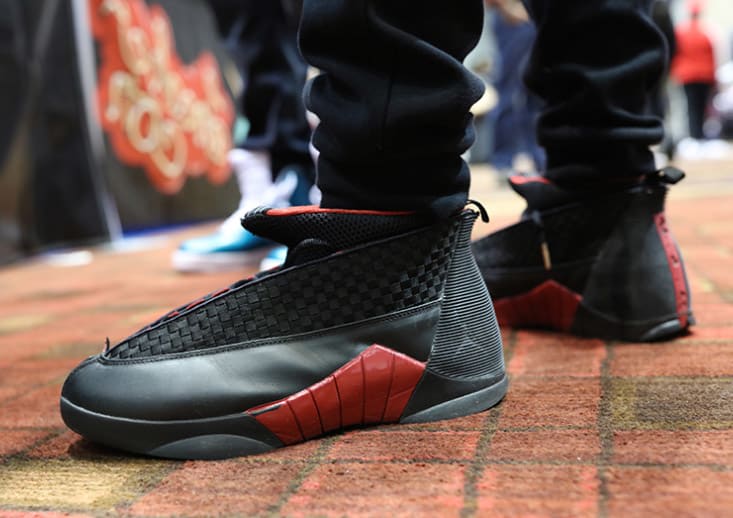
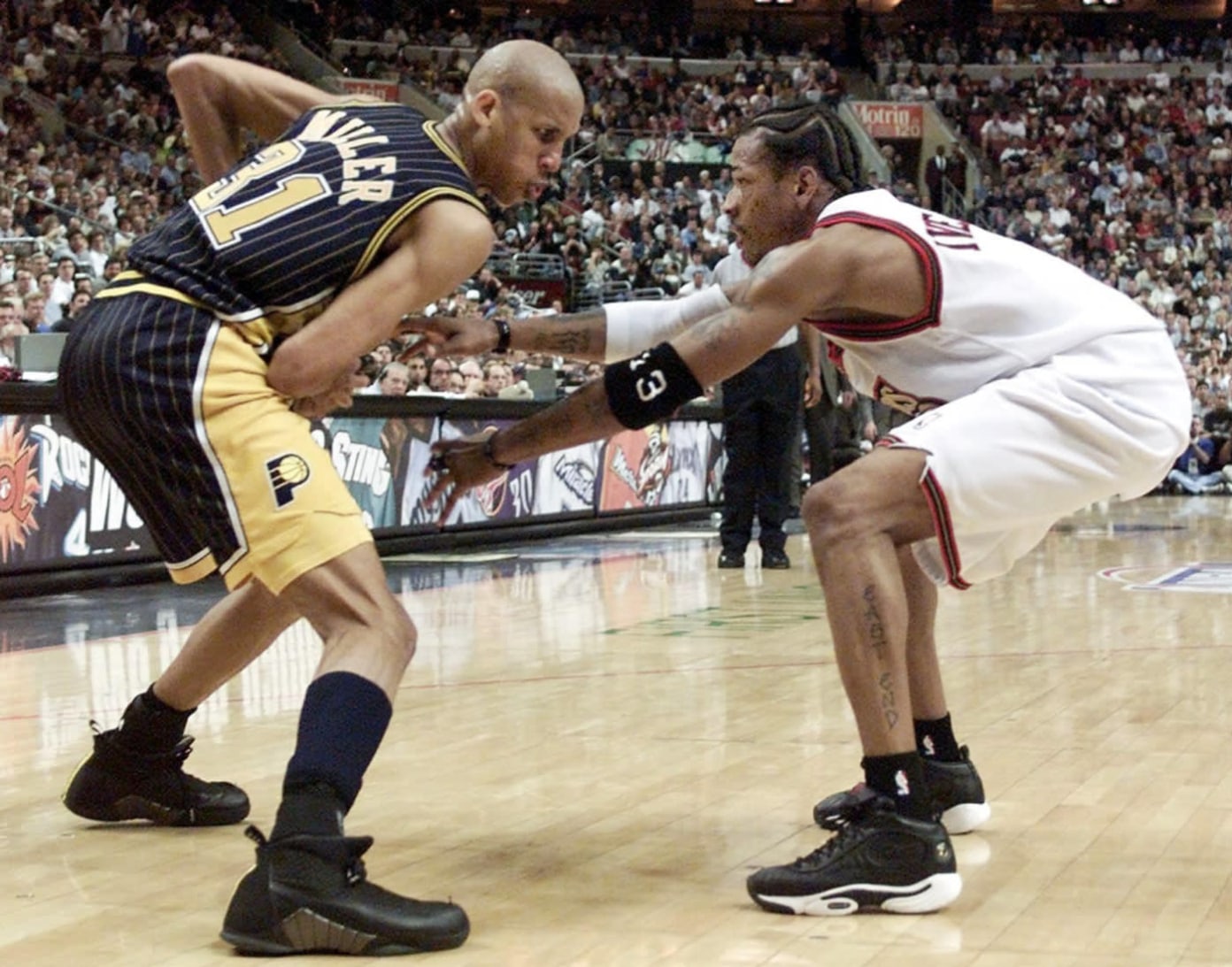


Air Jordan 16
Wilson Smith III stepped in to be head designer of the Air Jordan 16. Wilson’s plan with the XVI was to add all of the main elements from the past Air Jordan models into one. Notice the patent leather on the toe box (Air Jordan XI), ribbed leather gaiter (Air Jordan XIV), 3/4 mid cut (Air Jordan III), mesh uppers (Air Jordan V) and clear rubber soles (Air Jordan V, VI, XI).
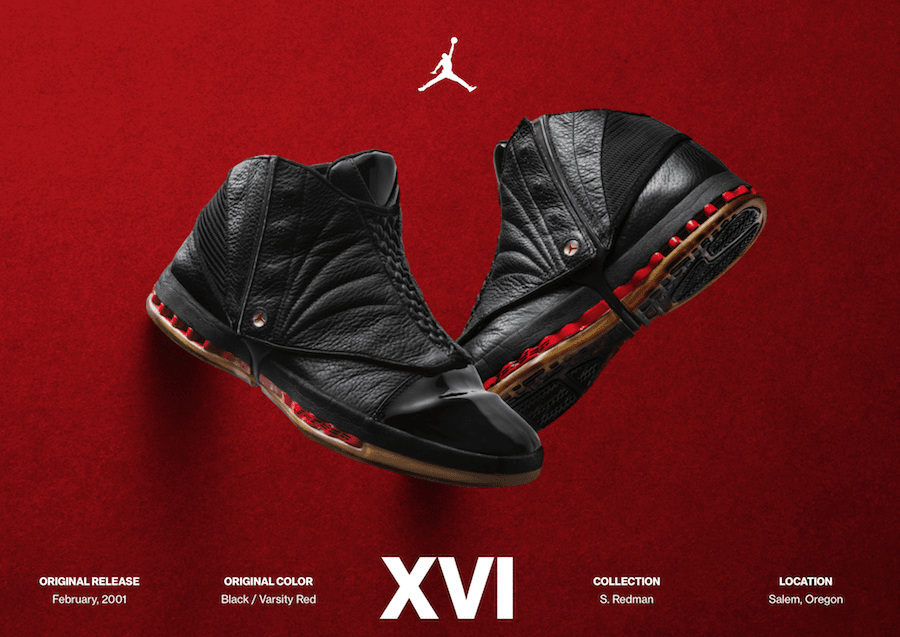
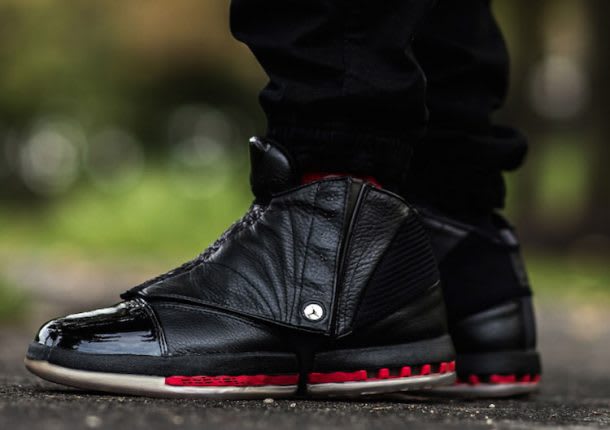


The return of the patent leather gave the Air Jordan 16 a dress look, which people wore with tuxedos (same on the Air Jordan XI), but of course the Air Jordan XVI was not as popular as the Air Jordan XI.
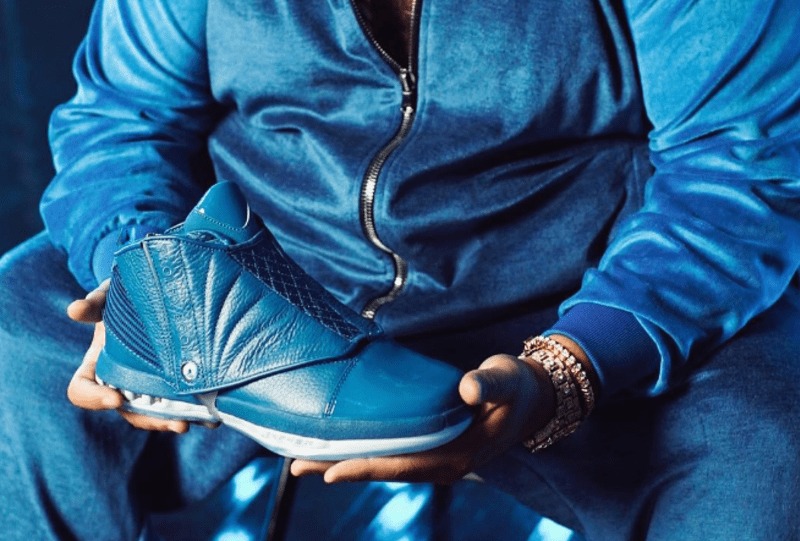
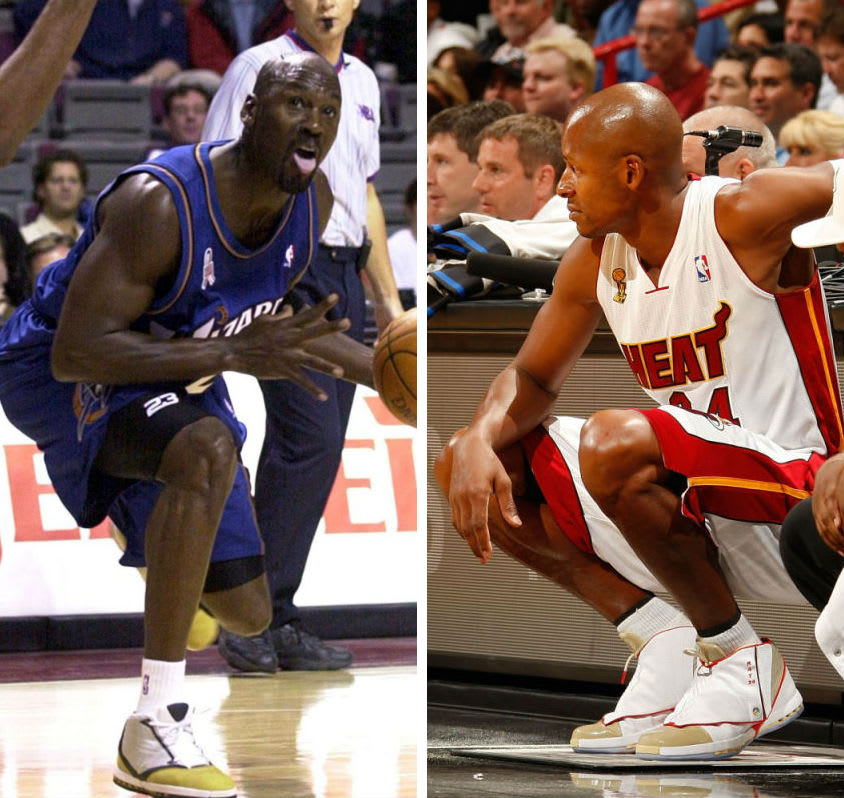


The Air Jordan XVI is the first model in the line to have a gaiter or shroud. The gaiter is removable, which made them look like a brand new shoe. A downfall about the gaiter is that when worn during a basketball game, they could fall off. Also the Air Jordan XVI was said to have a tight fit with the gaiter’s on. The Air Jordan 16 is very lightweight, but many said it was still stiff.
Air Jordan 17
Wilson Smith III designed the Air Jordan 17. Around the time sketching was started, Michael signed Michael Phillips the musician. So one key element to the Air Jordan XVII was from Jazz music. If you look on them you will notice molded in jazz notes. Also, inspirations for the shoe once again came from a car, this time being an Aston Martin. The soles were said to come from a golf course Michael played at.

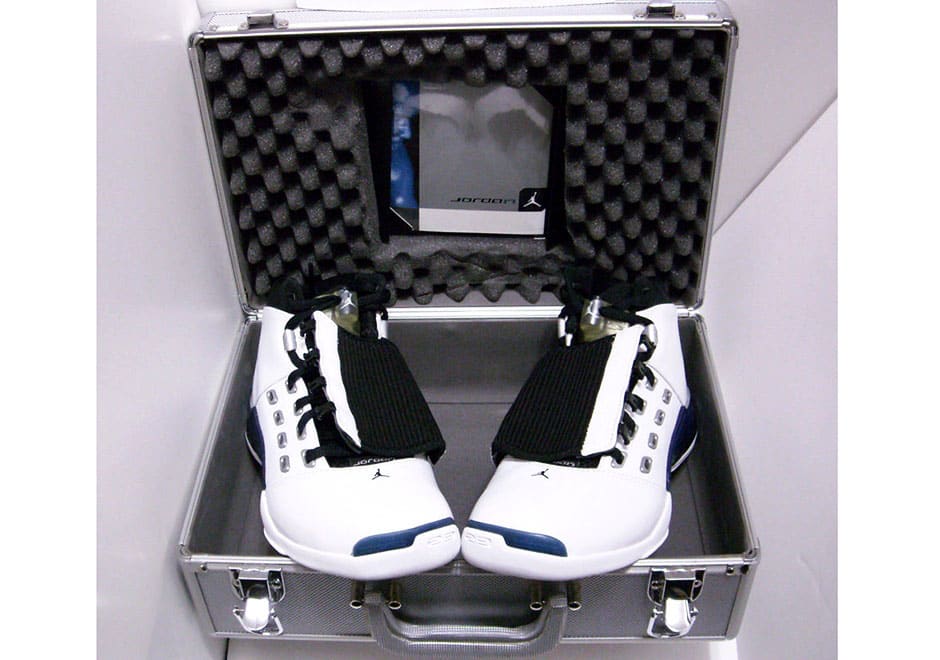


The Air Jordan XVII was a premium product, coming equipped with a removable mid-foot strap, Zoom Air sole, dynamic-fit sleeve, hidden quick lace system, lace-locks, leather uppers and carbon-fiber sheath. Each pair even came with its own metal carrying case and a CD.
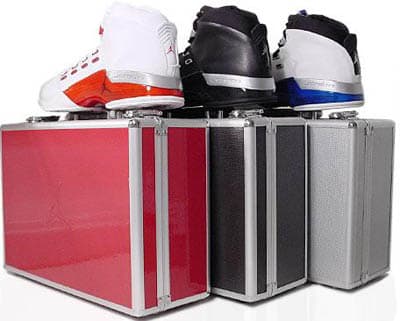



Air Jordan 18
Tate Kuerbis was head designer of the Air Jordan 18. Tate was a part of Nike since 1995 and Jordan Brand since 1999.
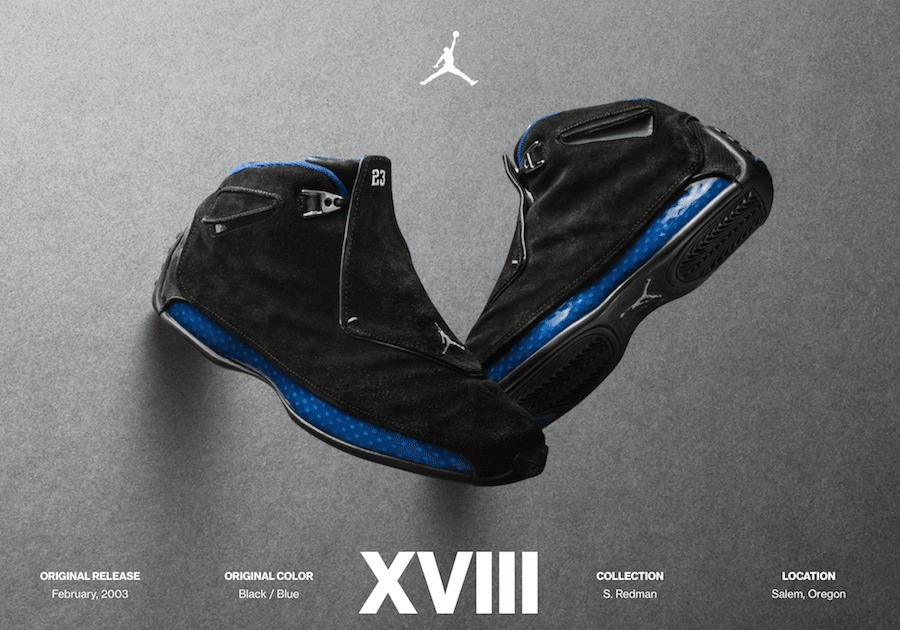
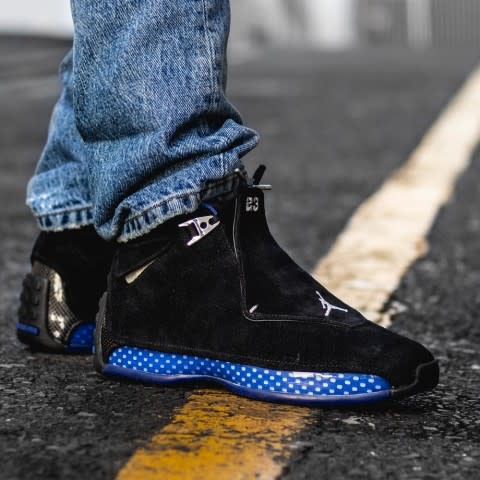


Inspirations can be seen from different places on the Air Jordan XVIII, for example, the “rubber heel wrap” idea came from race car driving shoes, the Carbon fiber-based monocoque (F1 race cars), and the bold stitching came from Italian dress shoes, but the overall outlook was from the automobile world (one of Michael’s adorations).
The Air Jordan 18 did not come with a fancy carrying case, or CD, but they did come with a premium slide out box, towel, brush, and an “Air Jordan XVIII Driver’s Manual” pamphlet.
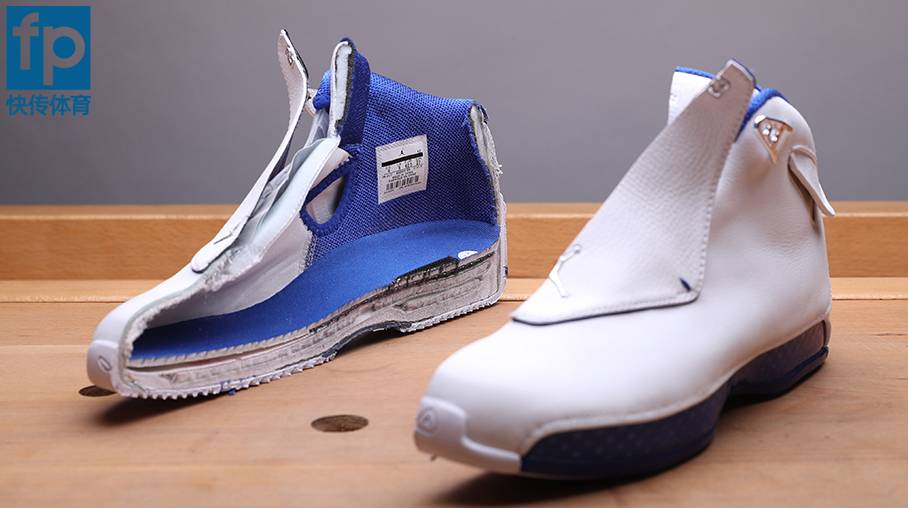
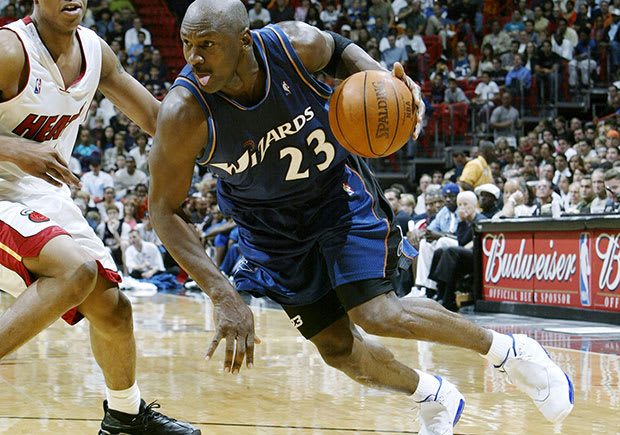


Air Jordan 19
Tate Kuerbis is back to design the Air Jordan 19, but he is not alone. With Tate is Jason Mayden, Wilson Smith, Josh Heard, and Suzette Henri. The new steps taken in the design of the Air Jordan XIX would need them all.
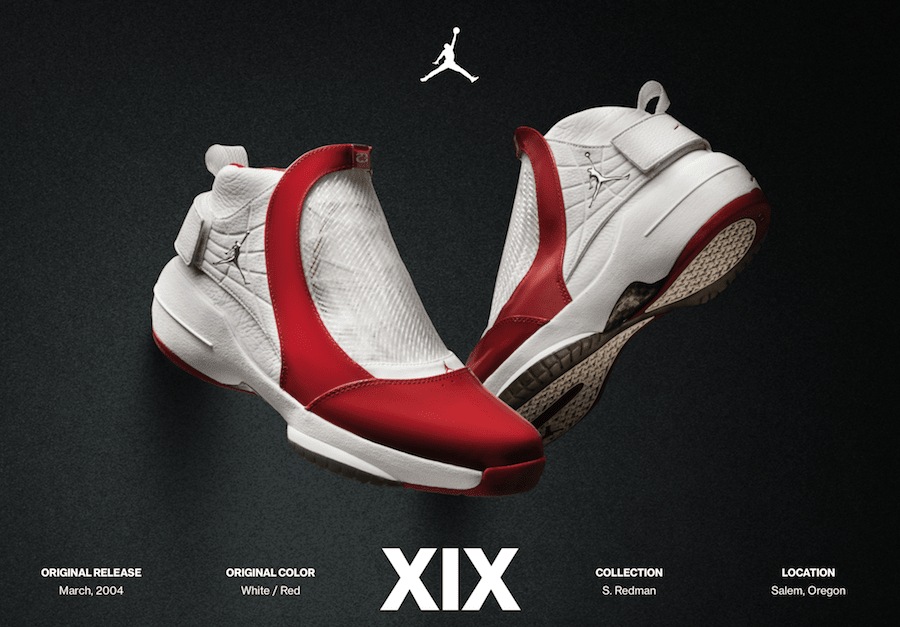
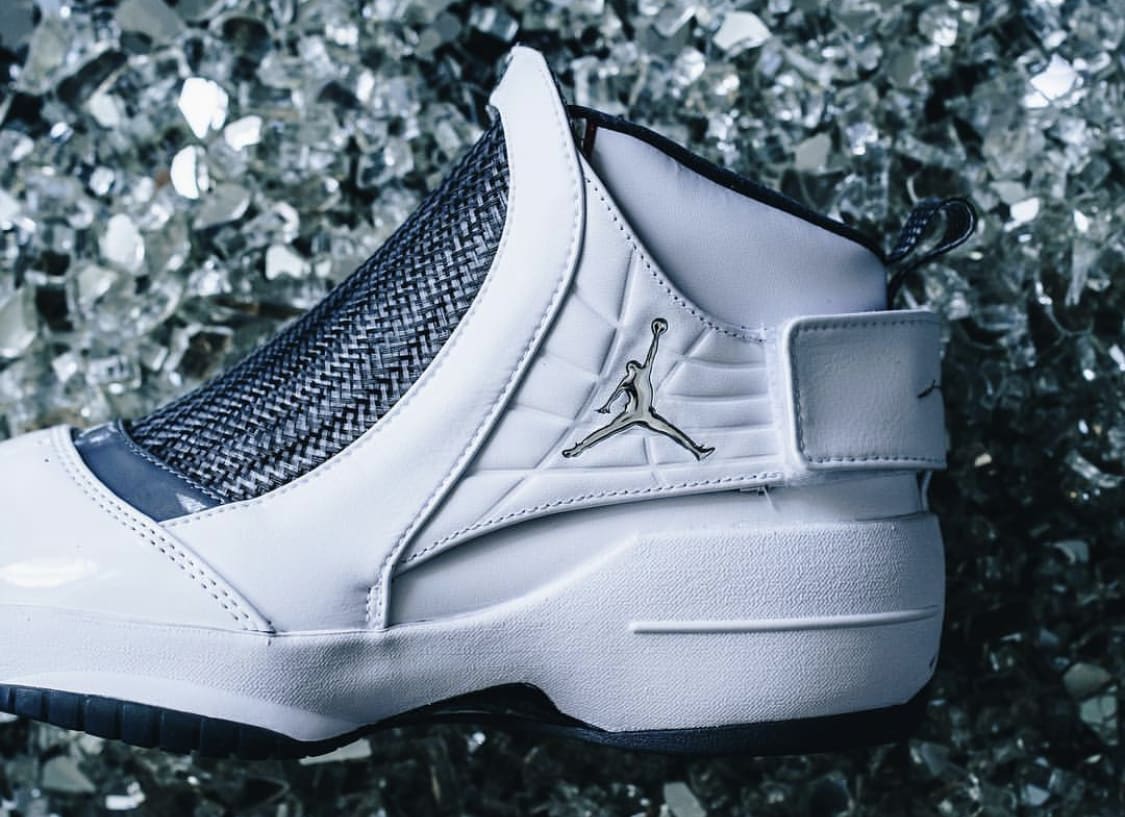


Inspiration for the Air Jordan 19 came from the deadliest snake in the world, the black mamba. When the black mamba feels threatened, it raises its body up in the air, shows its fangs, and makes a loud hissing sound. Never before seen on a basketball shoe was a material called tech-flex. This material is used in the automobile industry. Tech-flex is a material which can stretch, and since it is used on the Air Jordan XIX it gave your foot the comfort you need.
Some great qualities of the Air Jordan XIX is a carbon fiber shank plate, phylon midsole, full-length zoom air unit, patent leather toe box, tech-flex upper, Velcro heel strap and plastic lace-locks. The Air Jordan 19 box was unique, and when you opened the box, it split from the middle, instead of the normal open from the top or side. Each shoe came in a Air Jordan net bag
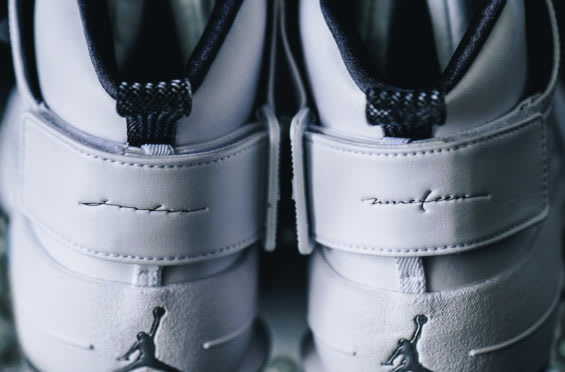



Air Jordan 20
The Air Jordan 20 would launch in 2005, which means it was Nike and Jordan Brand’s 20th anniversary. Tinker Hatfield had not designed for Jordan Brand since the Air Jordan XV, but it was Gentry Humphries’ (Footwear Business Director) idea to have him design the Air Jordan XX.
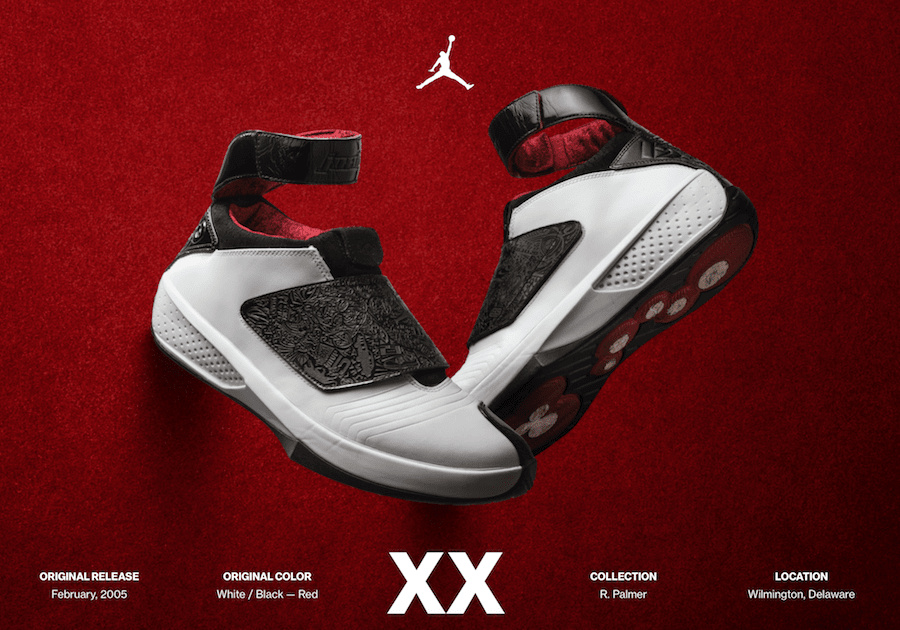
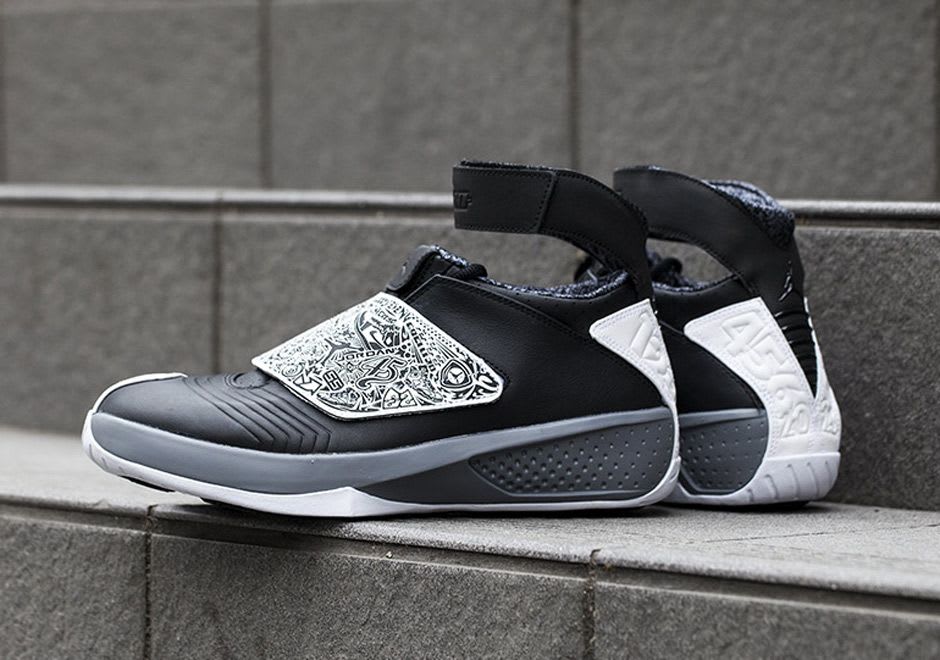


Inspirations for the Air Jordan 20 came from custom trumpets, motorcycle tires and racing boots. David Monette, who designs custom trumpets and engraves designs (better known as lasering) was the cause of the Air Jordan XX for having the lasering on the mid foot strap. Mark Smith (Nike’s laser expert) came to design the midfoot strap. Air Jordan XX 20 StealthsNow if you look close on the mid foot strap on the AJ XX you will notice symbols. Each symbol represents an experience MJ has had in his life. Some examples included the 1976 Chevrolet Monte Carlo, the Bus Driver cap with golf clubs crossed and a toolbox with the word POPs.
In terms of tech, the Air Jordan 20 had a lot of it. It featured Independent Podular Suspension or “pods”, an internal shank plate, phylon midsole, as well as a strap to make the shoe feel a little more “secured” to your foot.
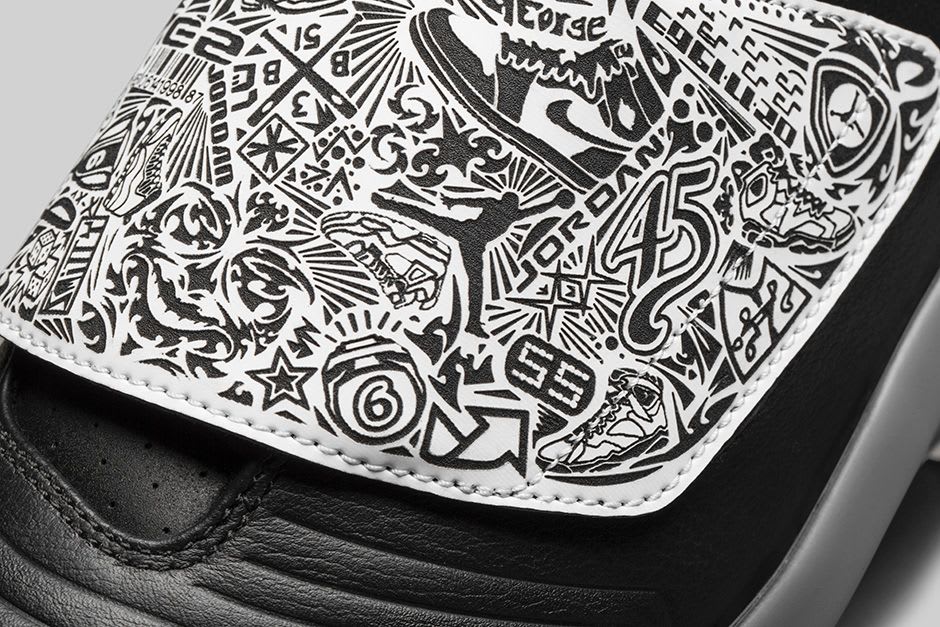
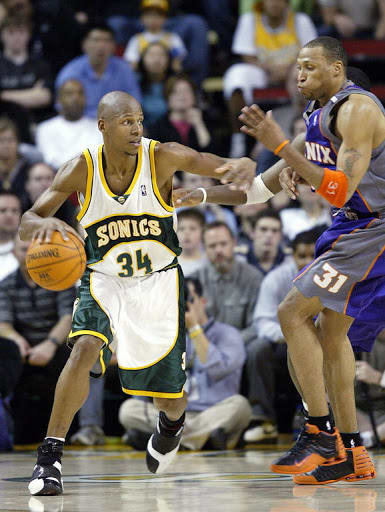


Air Jordan 21
Jordan Brand went with designer D’Wayne Edwards for the Air Jordan 21. The design of the Air Jordan XXI is very simple compared to the other Air Jordan models. But like always, the Air Jordan XXI was full of high-tech materials. With each year gone by, it is less likely that we will see Michael Jordan back in the NBA. Knowing this, the Air Jordan XXI was best described as being the DNA of a champion.
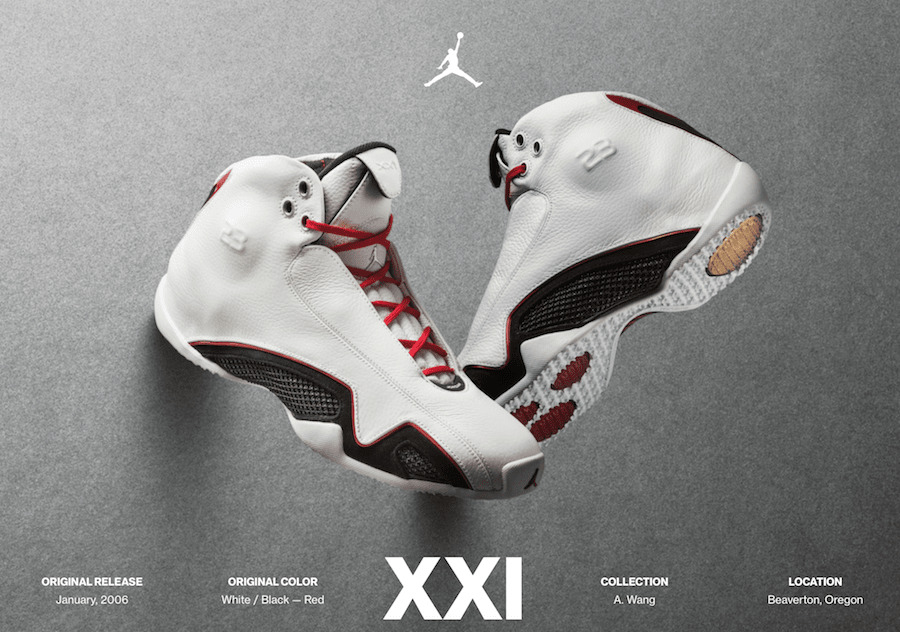
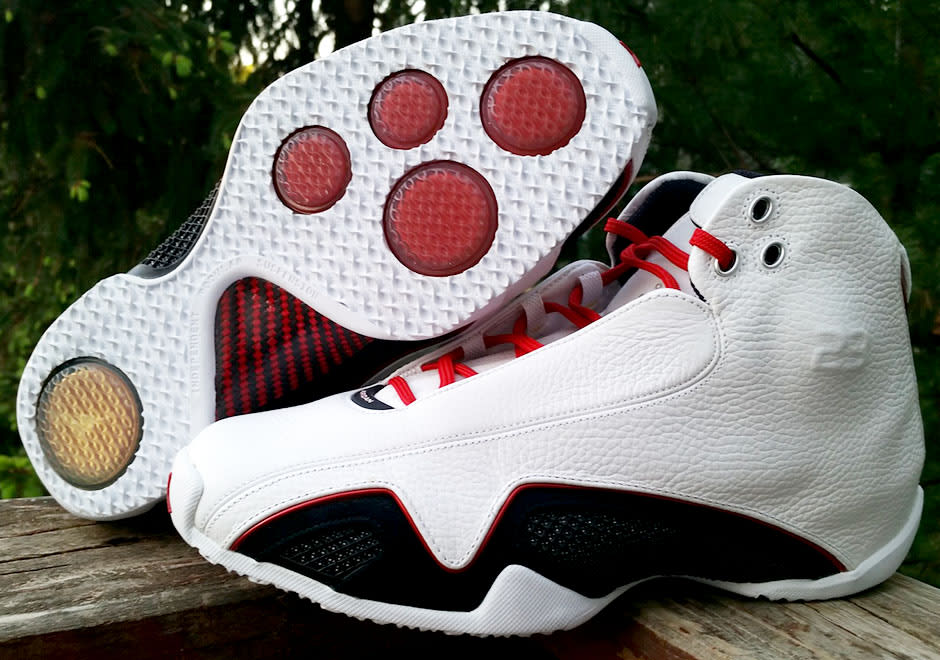


Nothing new as far as inspirations go on the Air Jordan 21, which came from a Bentley Continental GT coupe (another car). The front of the Air Jordan XXI is said to look like the grill on the Bentley. It featured a combination of luxurious Italian suedes with rich full-grain leathers, with the same pods cushioning as the Air Jordan 20. But this time the pods had been improved on. Evolution of the I.P.S (Independent Podular Suspension) now includes interchangeable cushioning technology with a customizable heel zoom pillar or heel encapsulated pillar. Carbon fiber shank plate offers mid foot and arch support. The Jordan 21 was so inspired by cars that it even featured in Fast and the Furious: Tokyo Drift.




Air Jordan 22
The Air Jordan 22 was inspired by F-22 Raptor Strike Fighter, when you look at the F-22 Raptor you see the light camo spots sharp aerodynamic cuts that can cut through the air like ice. Some of the characteristics of the F-22 can be seen on the Air Jordan 22.
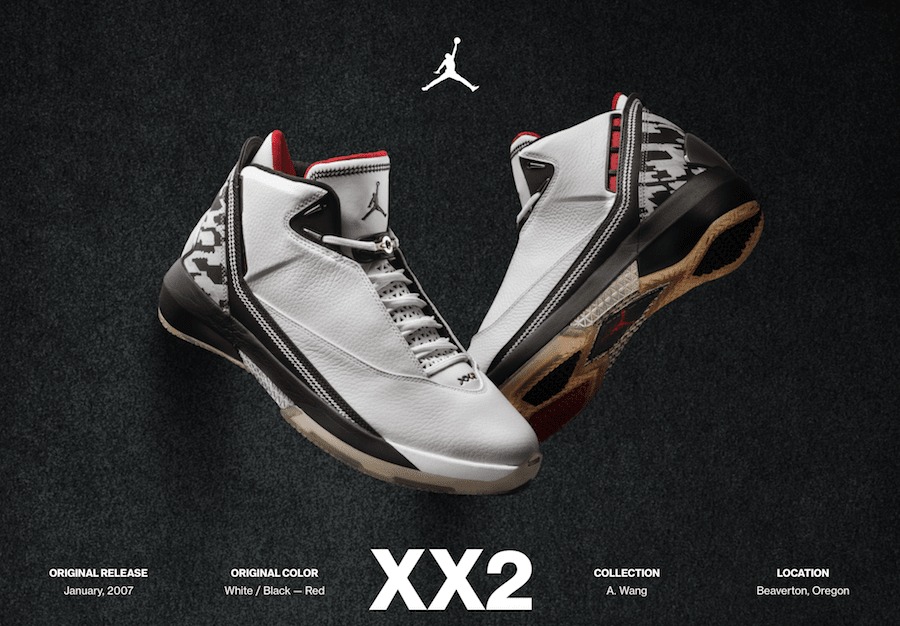
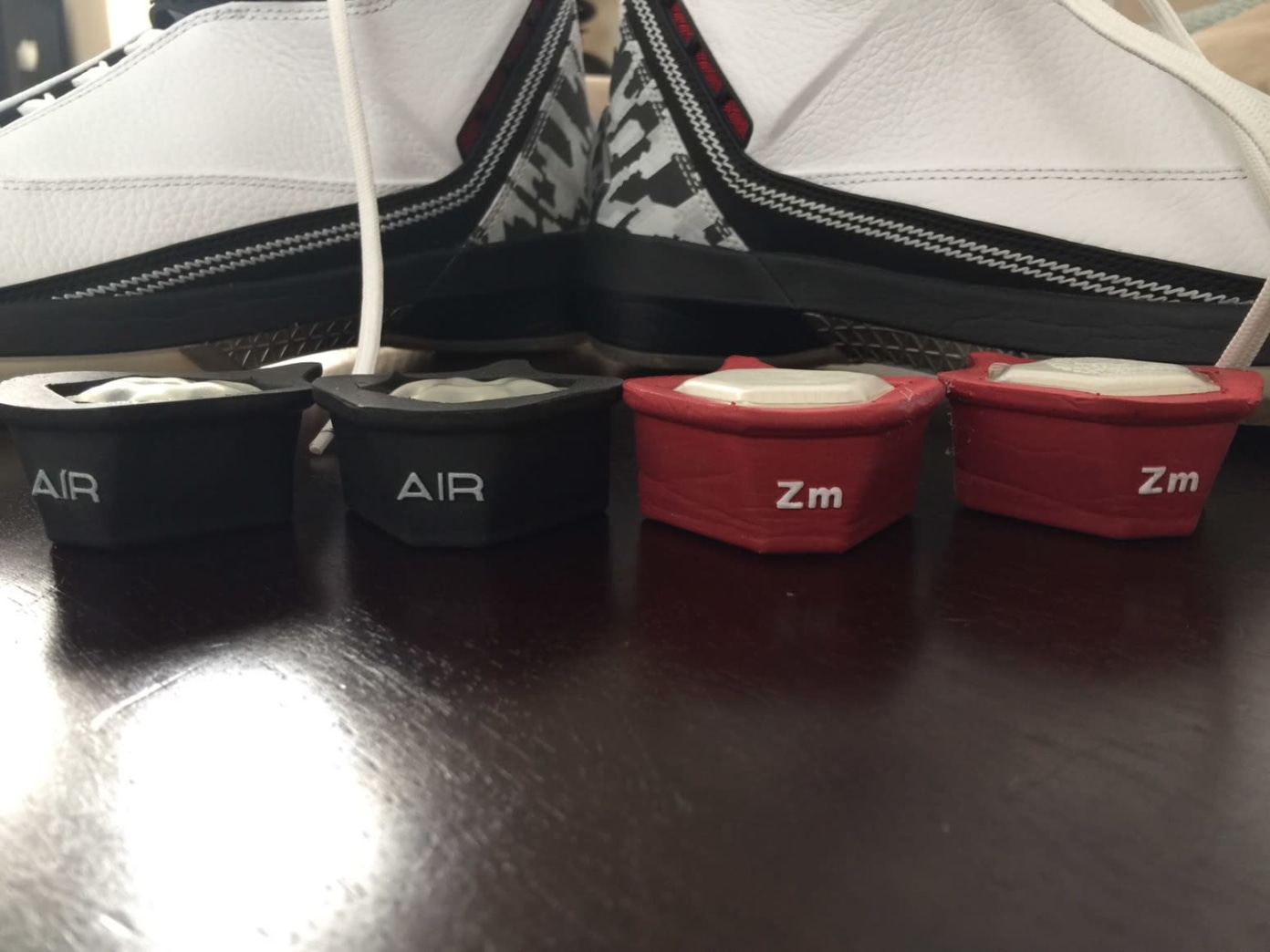


Jordan Brand has used the Independent Podular Suspension (IPS) on the Air Jordan XX1 and with the success they \also used it on the Air Jordan XX2. Unlike the past model using IPS the pods were a little difficult to remove, so on the Air Jordan XX2 the pods are square with a little tongue to pull them out. Also the interchangeable Zoom Air pod is double-stacked, which reduces the cushioning hardness.
Early samples of the Air Jordan XX2 had vents on the heel with stitching starting at the heel running almost through the toe box. Samples also had a removable strap, but Michael did not like the look of the strap so this was dropped. The shank plate is made from thermoplastic urethane which is also coated with paint containing metallic titanium.
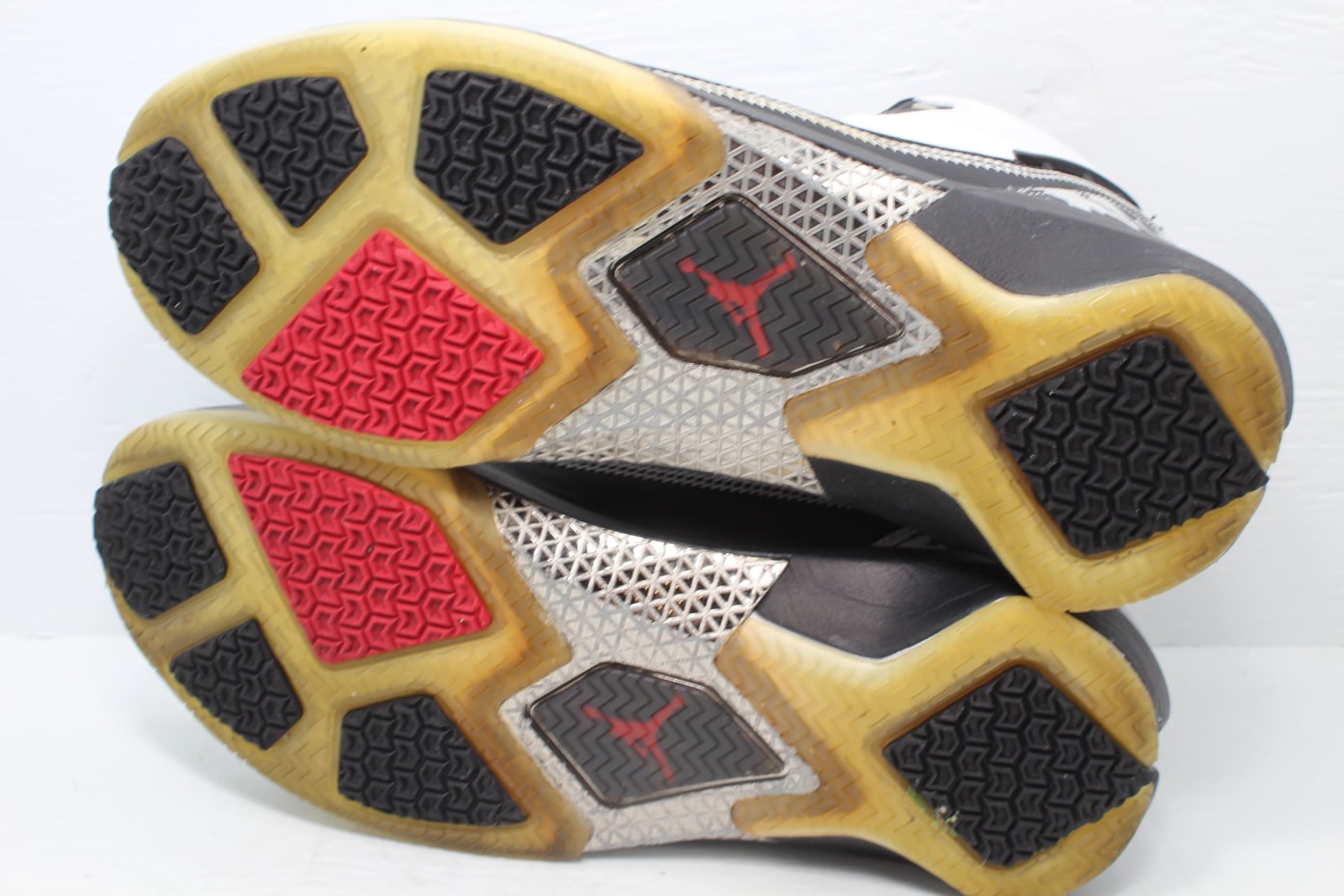



Air Jordan 23
The number 23 was Michael Jordan’s number for most of his career and now 2008 marks the 23rd year of the production of the Air Jordan line. Jordan Brand, Tinker Hatfield and Michael Jordan of course teamed up to release the Air Jordan XX3 (23) shoe. The Air Jordan XX3 will be the first basketball shoe from Nike to embrace the Nike Considered design, where details in the development and design of the shoe seek to reduce waste and allow for use of environmentally preferred materials without comprising the athletic performance.
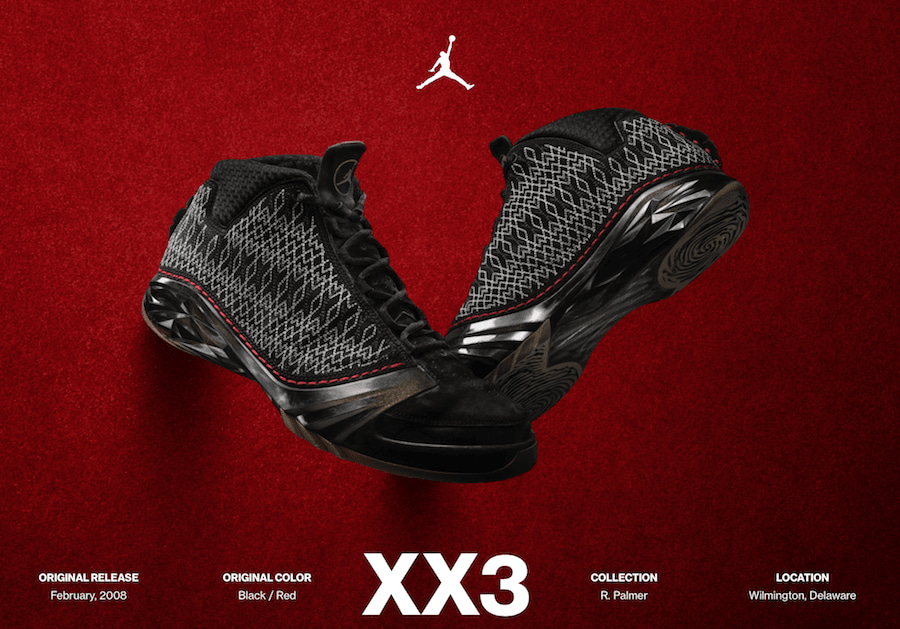



The Air Jordan XX3 is one of the most complex and complicated shoes of its time and much research and development went into the shoe to find the perfect look and feel. An automotive quality painting process was used for the backside of the Thermo Plastic Urethane chassis is completed by an efficient robot arm to maximize the quality, consistency and durability of the paint and component. To help out with the environment, the outsole is composed of environmentally preferred materials that reduces the toxins and uses the Nike grind material from footwear outsole manufacturing waste.
One of the most important aspects of the Air Jordan 23 is its exterior and it is composed of many different materials and designs. Air Jordan XX3 (23)For the upper, a newly engineered technique that uses a machine to stitch the upper in 3-D form was implemented into the design. A very important aspect of the shoe is its high comfort level; a dual density sock liner offers full comfort while the recovery foam around the heel conforms to foot shapes to create a more custom fit. The Air Jordan 2009 honored the most underrated aspect of MJ's game: his defense. Inspired by fencing and MJ's ability to control his opponent's every move through spacing, the Air Jordan 2009 incorporated pleated-silk upper metallic mesh breathability ports and sword-slash traction pattern.

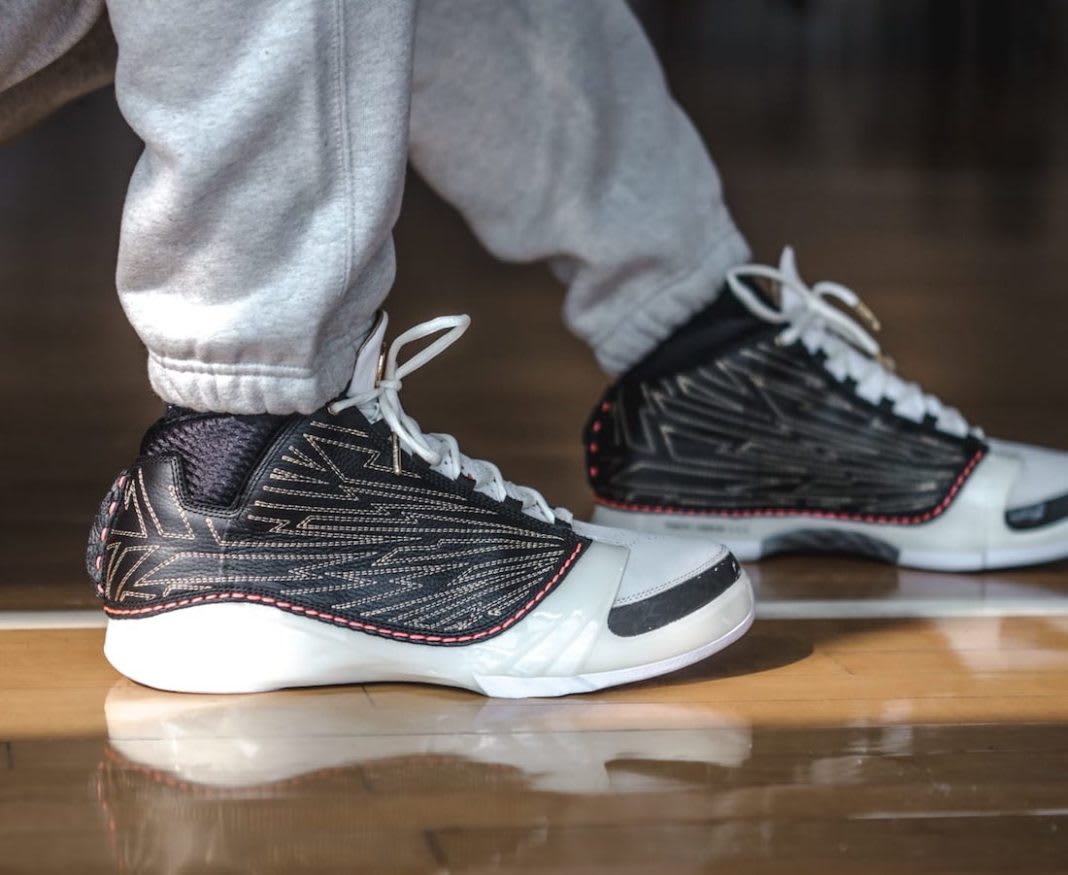


Air Jordan 24
The Air Jordan 2009 honored the most underrated aspect of MJ's game: his defense. Inspired by fencing and MJ's ability to control his opponent's every move through spacing, the Air Jordan 2009 incorporated pleated-silk upper, metallic mesh breathability ports and sword-slash traction pattern.
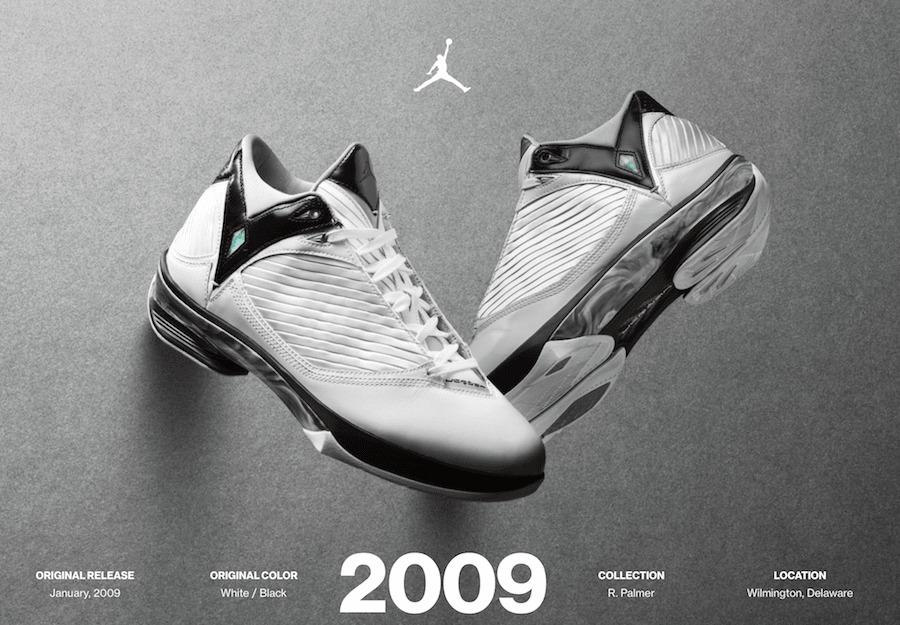
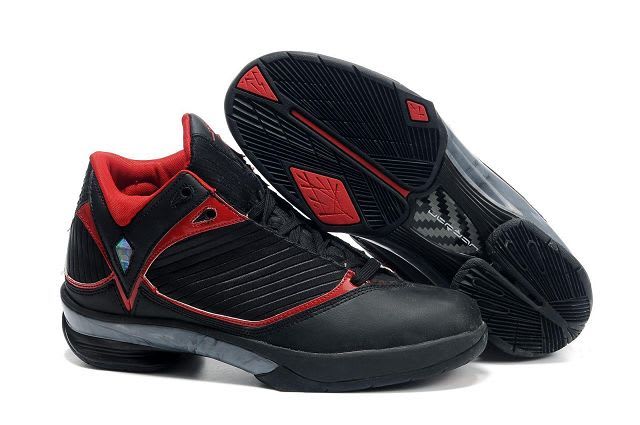


Its panache leather took cues from the design of the AJXI. Unlike other Air Jordans, the AJ 2009 is the first in the series to use its release year in the name, symbolizing the brand's commitment to performance innovation. It was also the second shoe in the series behind the AJXIlI - to become part of the Nike Considered category for its use of environmentally friendly materials.




Air Jordan 25
Inspired by MJ's ability to see through his opponents, Tinker Hatfield and Mark Smith introduced transparent TPU windows to the sides of the Air Jordan 2010. On the base of each midsole includes MJ's famous quote: "I've failed over and over and over again in my life. And that is why I succeed."

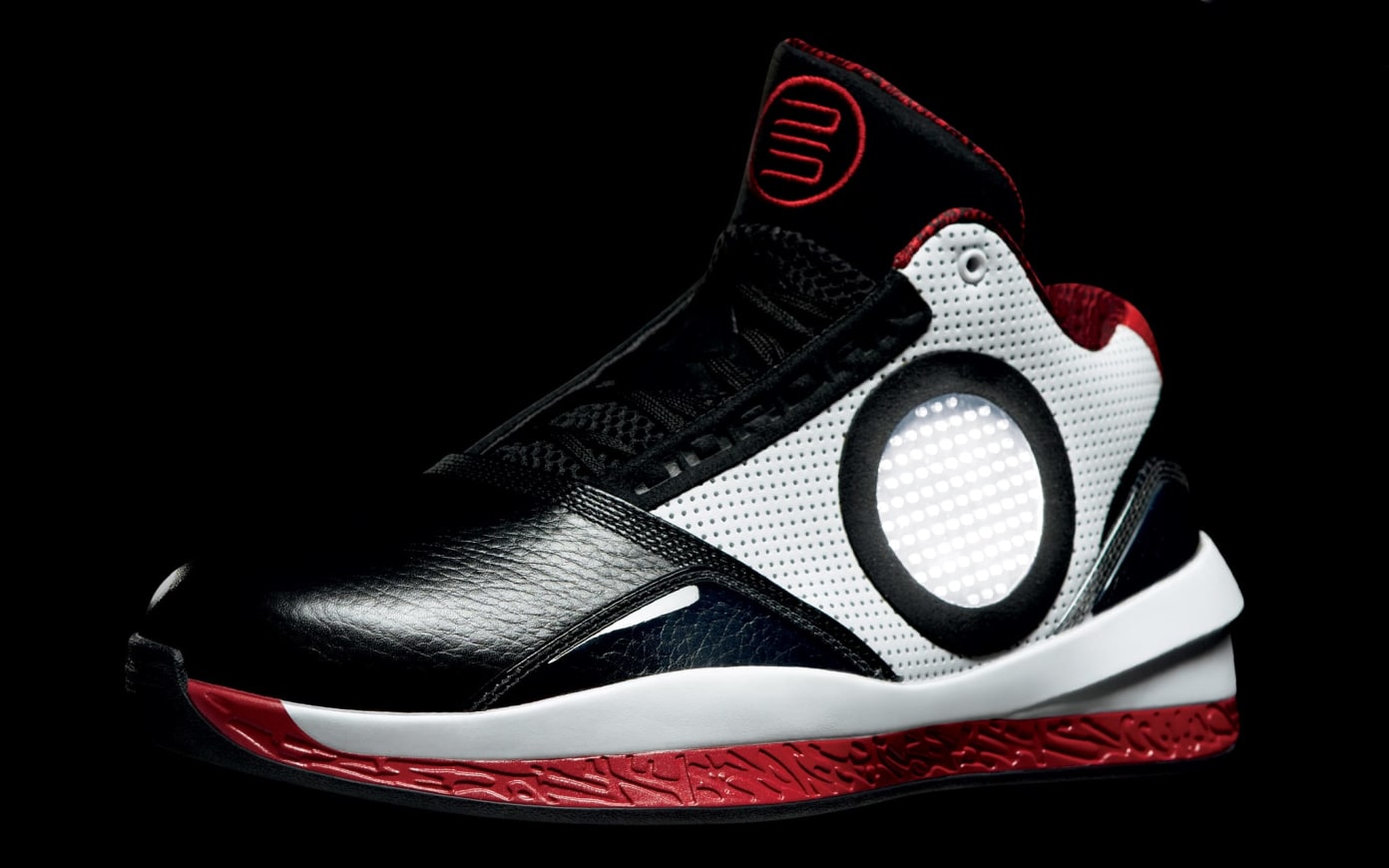


While the Air Jordan 2010 pays tribute to MJ's game and the past, it also nods to the future with its innovation. It introduced the first independent forefoot for
supportive, natural movement and borrowed a cue from running shoes by using a Zoom Air unit in the outsole for maximum responsiveness.
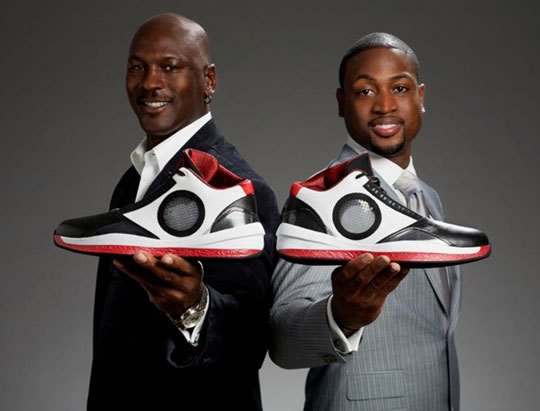
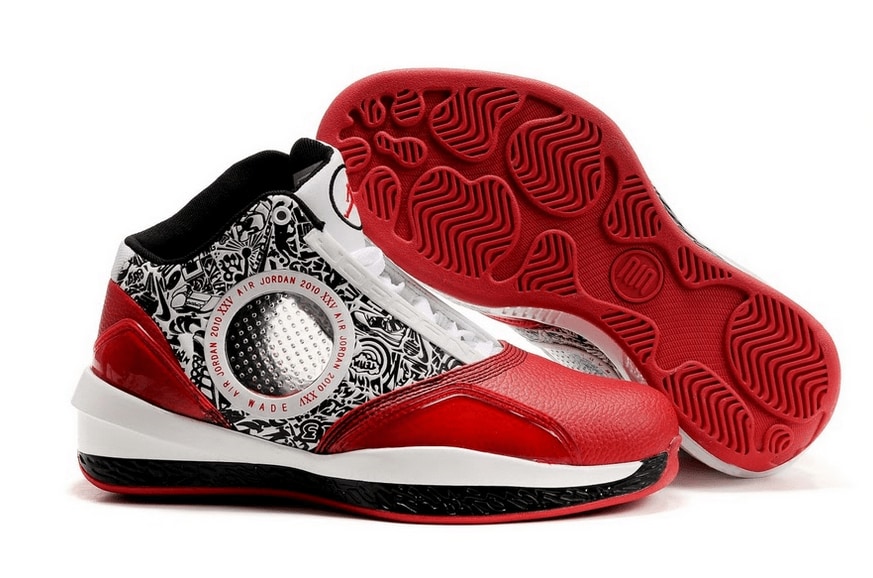


Air Jordan 26
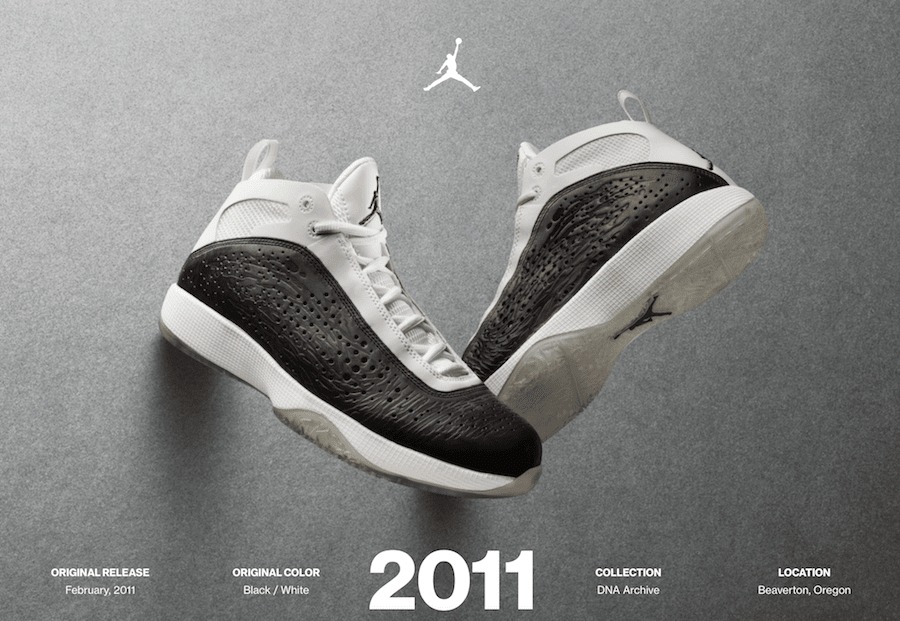
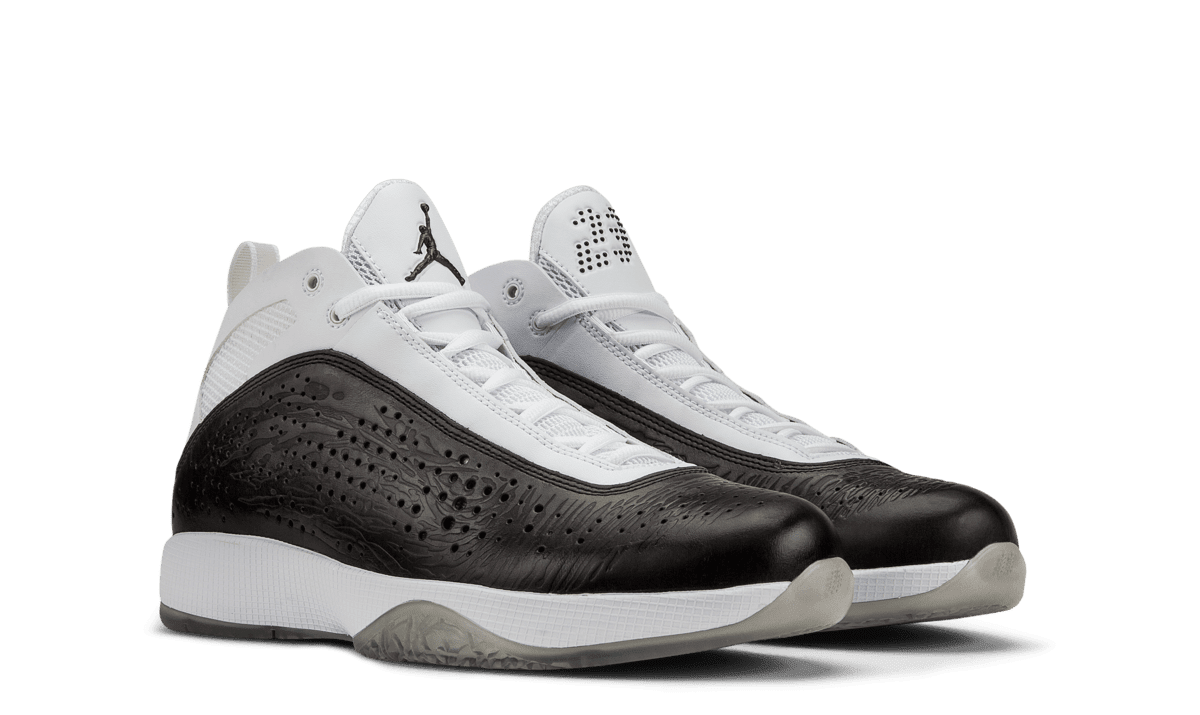


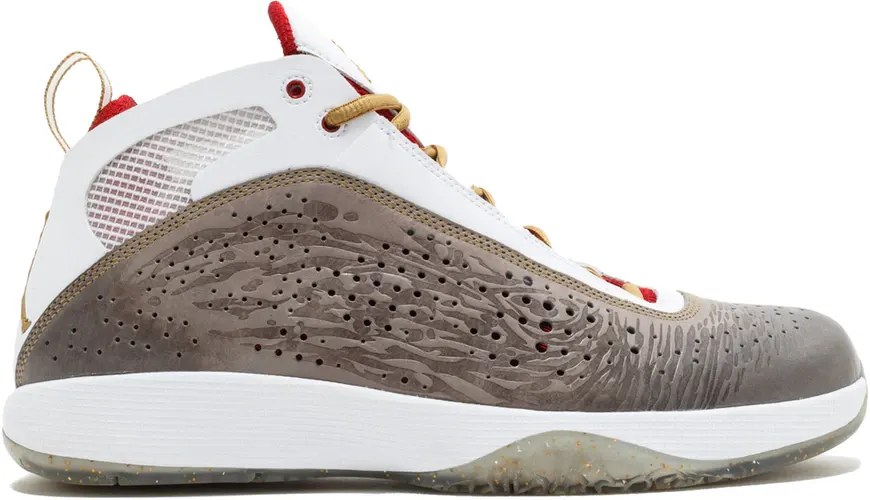
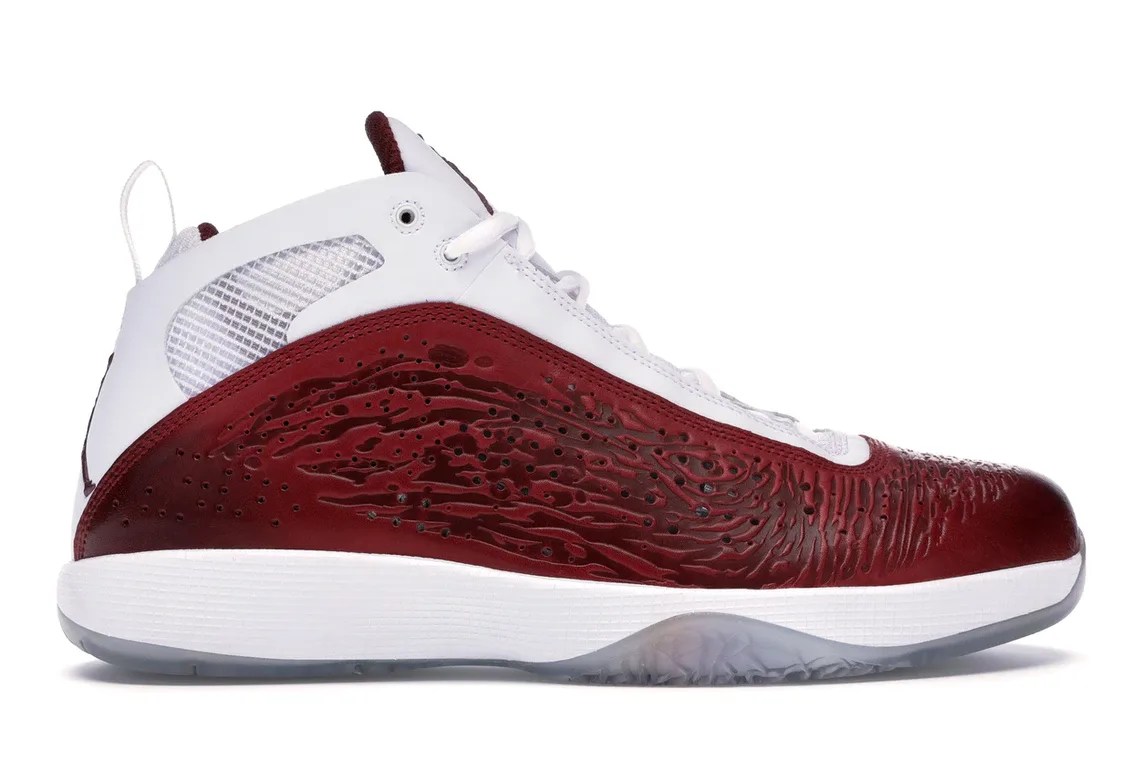


Stay tuned for next week where we look at models 27 - 35.
Sources: Jordan Blog, SneakerNews, SneakerFiles












